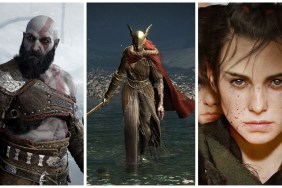Heeeeeere ghosty-ghosty-ghosty…
The more I play games, the more I become enthralled with the more… "unusual" stuff. Maybe it's a weakness of mine – I've been burned before by the likes of Fairytale Fights – but with my share of hits like Sega's gritty Madworld and Aksys' 999, either the fringe games and genres are growing…
-
Beautiful, smooth animation
-
Everybody has a unique style and look
-
Interesting and solvable puzzles
-
Story is convoluted, doesn't make much sense










